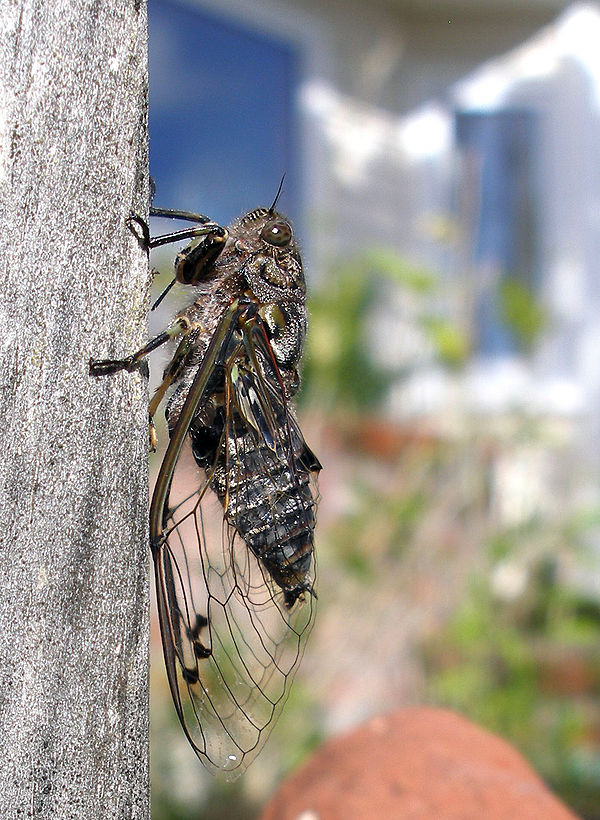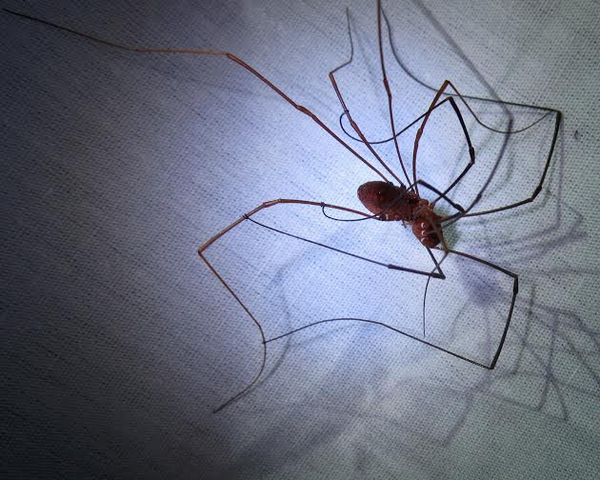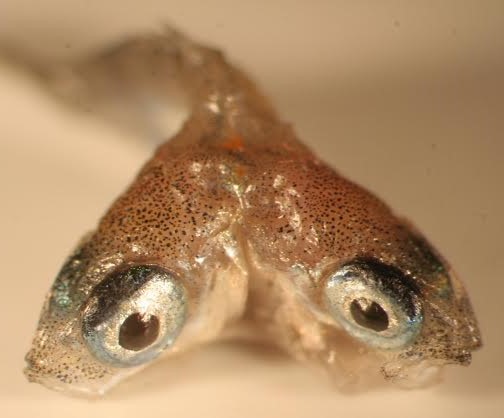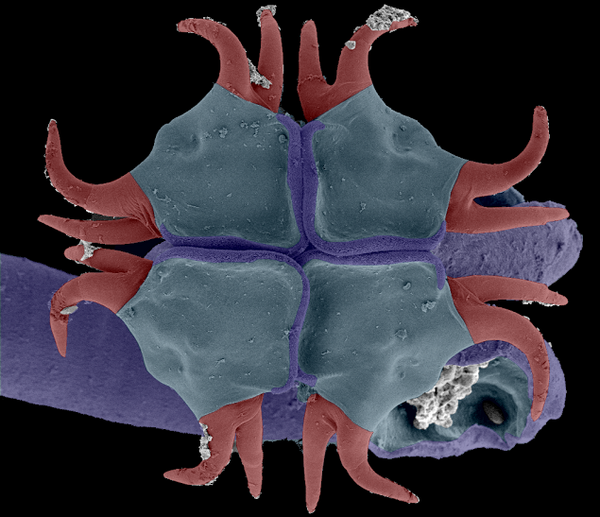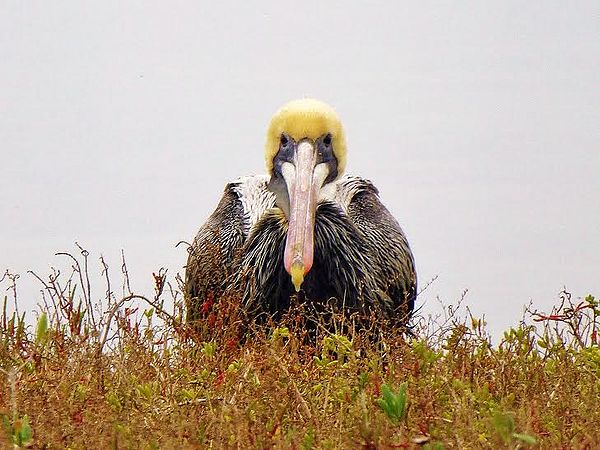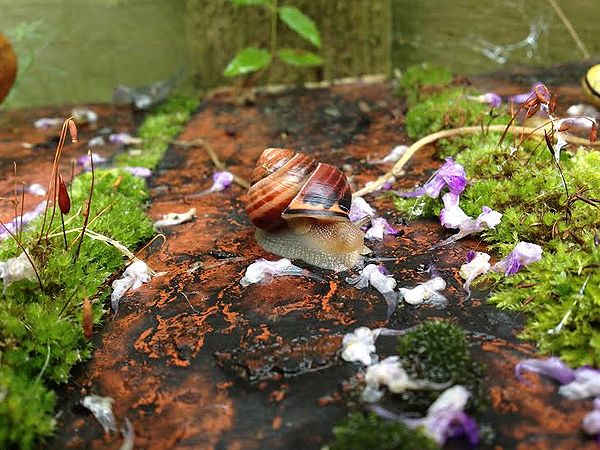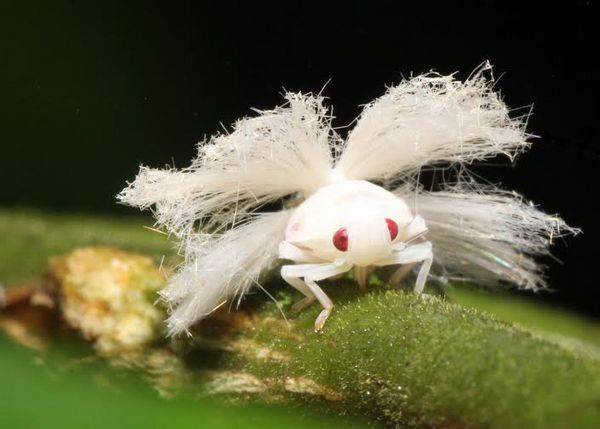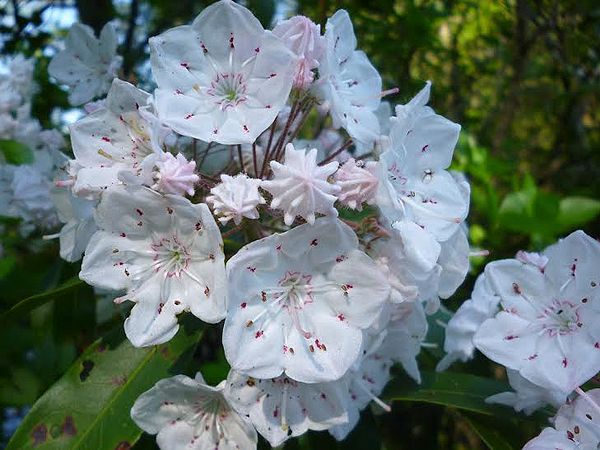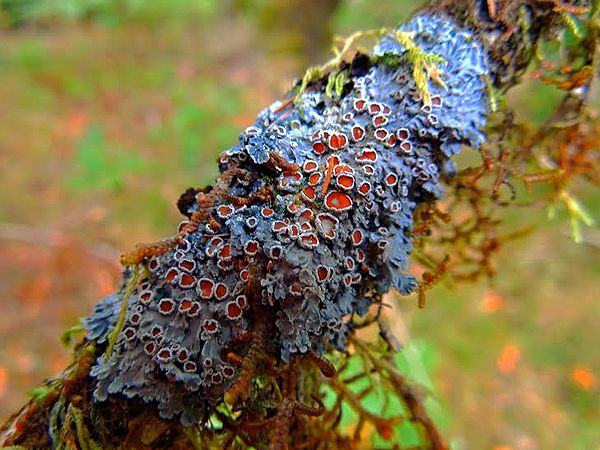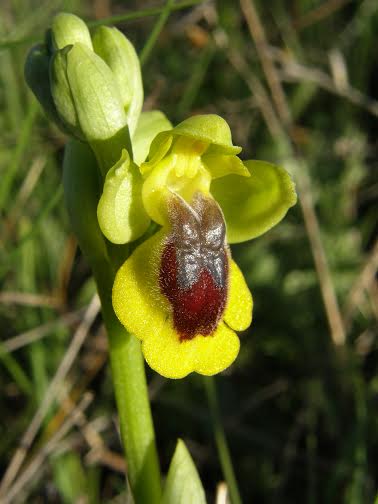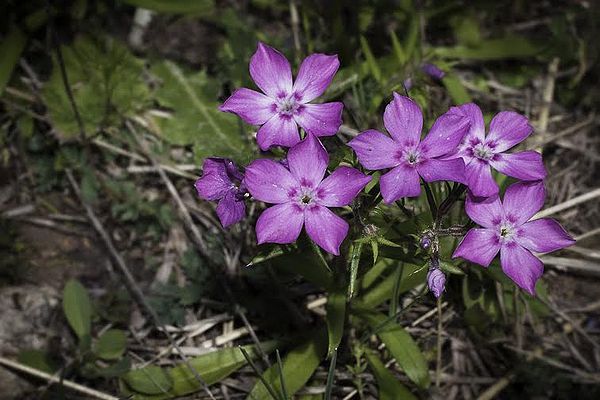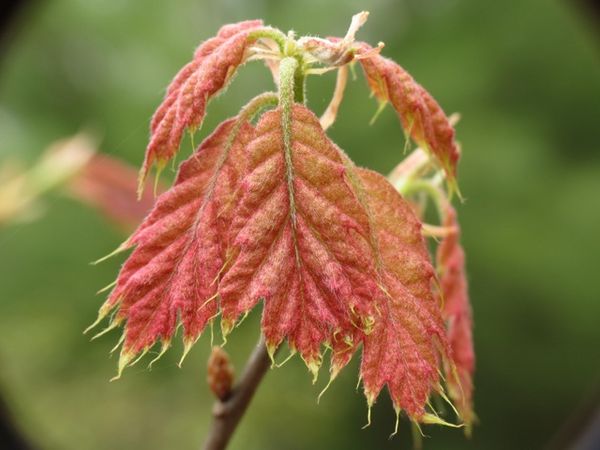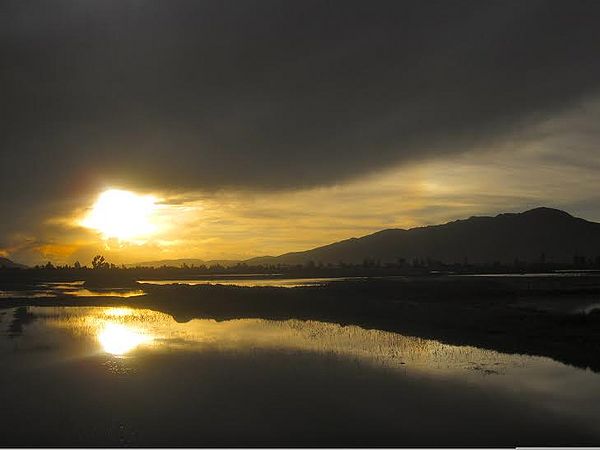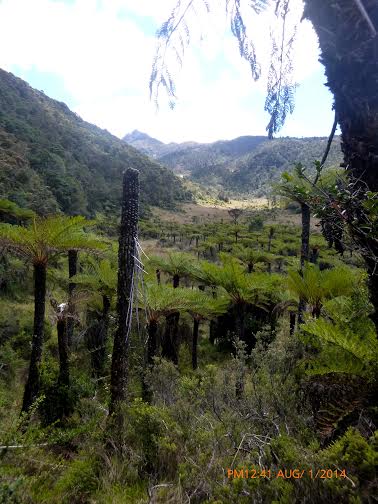2015 Biological Photo Contest
This page showcases the entries to the 2015 Biological Photo Contest. Voting will commence in the week preceding the Grad Symposium with winners announced at the end of the Symposium. To enter, send your full resolution photo and caption to kaitlin.gallagher@uconn.edu and it will be put on this page.
| This singing Amphipsalta cingulata male "clapping cicada" from Miramar, Wellington, NZ, is probably only days old because the tiny silvery setae covering his body are still very much in tact and reflecting the sunlight. Note the long straw-like sucking beak, spotted compound eyes, and “nose” (cibarial pump) like the grill of a 1940 Oldsmobile. - Chris Simon | |
| Two opiliones engaged in a passionate embrace (they're doing it). - Brigette Zackarczenko | |
| A day in the life of a two-headed stickleback.
Bill: "Hey, Marty, you hungry?" Marty: "Starving, Bill. We're growing sticklebacks, aren't we?" B: "I think I saw some brine shrimp over there in the left corner of the tank." M: "Uh...Your left or mine?" B: "Geesh, Marty - I dunno, just look with each of your eyes. You tell me!" M: "Ok, ok...no need to get all cranky. Somebody's got a case of the Mondays. Alright I see them." B: "Good, so on the count of three, you stroke once with your fin, then me, then you, then me." M: "Fine but could you lay off the tail flipping this time? We don't want to scare them off...again!" B: "Would you just forget about it, already? Why do you always blame me every time we strike out?" M: "Look - I'm just saying to not get too excited on the chase, like you always do." B: "Well, fine! If you think you can hunt all by yourself, then go right ahead. You do all the swimming; I'll just watch." M: "Dammit, Bill - don't start this pity party again! Can we just get something to eat, please?" - Jeffrey Divino | |
| Even tapeworms fear rejection. This artificially colored SEM shows some of the different attachment structures this tapeworm uses to remain fastened to its shark host. - Jimmy Bernot | |
| This Brown Pelican spent an entire day in silent observation while my field techs and I ran to and fro, catching sparrows. Happily for all, the day ended without a pelican-shaped hole in the net. - Alyssa Borowske | |
| Northern pig-tailed macaque (Macaca leonina) lets out a big yawn in Khao Yai National Park in Thailand. - Suman Neupane | |
| A common garden snail (Cornu asperum) on a brick wall in Sheffield, England. A grove snail (Cepaea nemoralis), famous for it's shell-pattern polymorphism, is just barely visible. The weather in Sheffield is rarely sunny, but often very bright, allowing this photo to be taken with only an iPhone 4S. - Tim Farkas | |
| At just the right time, in just the right place - a bee rests on the cap of a mushroom in Meshomasic State Forest. - Annette Evans | |
| Pokemons do exist! Found this tiny planthopper nymph hopping around the mixed dipterocarp forest of Borneo. - Johana Goyes Vallejos Winner of Animal Category |
| To go along with our Connecticut state flower (Kalmia latifolia), a verse from the Connecticut state song:
"Yankee Doodle went to town, Riding on a pony, Stuck a feather in his hat, And called it macaroni." - Nora Mitchell | |
| The otherworldly lichen Pannaria rubiginosa is a composite organism involving partners belonging to two of the three domains of Life : a fungal eukaryote and a photosynthetic bacterium (a cyanobacterium). Some cyanobacterial lichens, like this one, may display a stunning blue color when wet. But once desiccation kicks in, the astonishing blue of Pannaria rubiginosa is replaced by a drab, pale gray tinge. As for the contrasting red discs, they are fruiting bodies, which contain the tiny sexual spores of the fungal partner. The shot was taken in Madeira in September 2014. - Antoine Simon Winner of Plant Category | |
| Crassula columnaris from the EEB greenhouse. - Kevin Keegan | |
| Ophrys lutea Cav. is a Mediterranean orchid that mimics visually and chemically some of the stimuli of the females of a particular group of wasps. The males are attracted to these flowers and try to mate with them (pseudocopula). When they discover they have been fooled, it is usually too late and there is already a pair of pollinia glued to their back. - Rafael Medina | |
| Phlox cuspidata in Texas. - James Mickley | |
| Red Oak (Quercus rubra) putting out its first little blushingly red baby leaves of the year. Great Blue Hills, Canton, MA. May 10, 2014.
We will see these again someday when the snow melts (maybe my mid-July!) - Ben Gagliardi |
| Bolivian sunset - Anna Sjodin | |
| Its a photo of Saguaro cactuses taken somewhere on the road between Flagstaff and Phoenix AZ. - Hannah Gousse | |
| Invaded lanscape with field biologists. Wen Chen and Aine O'Sullivan tracking the European fire ant. (Pope's Pond, Milton, Massachusetts). - Eldridge Adams | |
| Working in freshwater systems is just so grueling and unpleasant sometimes. (Bantam River approaching Bantam Lake, northwestern Connecticut) - Jason Lech | |
| Papua New Guinea Highlands, Mount Wilhelm, sub-Alpine tree fern forest. - Lily Lewis | |
| Always spring for the window seat. - Michael Hutson Winner of Landscape Category |
